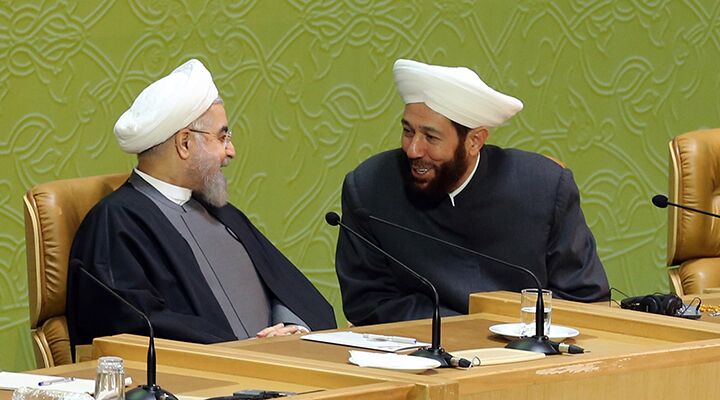
Iran Building Missile and Nuclear Facilities in Syria
Creating secret underground nuclear bunkers. Developing advanced missile sites. These are Iran’s latest projects. What makes these particularly important is that they are taking place in Syria.
In a report released on January 9, Germany’s Der Spiegel exposed the construction of a nuclear facility in Syria. The German news source cited intercepted phone conversations, aerial and satellite images, and facts about the construction of the facility in its exposition.
Work on the underground site allegedly began in 2009 in the town of Qusayr—tucked along the Lebanon-Syria border. With the aid of international backers, the facility has developed slowly in secrecy.
Israel destroyed Syria’s last nuclear facility in 2007. The threat of Israeli airstrikes has ebbed away in the ensuing years—Syria has undoubtedly gained much courage through support from its closest ally, Iran.
The new facility appears to be modeled much like Iran’s—underground, shielded from airstrikes, and away from prying eyes.
Growing Persian Influence
News of the facility was revealed as more Iranian activity within Syria also came to light. Last week, Iranian Revolutionary Guard commanders openly bragged about Iran’s recent missile development programs in Syria.
Iran has long supplied Syrian President Bashar Assad with weaponry, but the construction of missile factories within Syria sets a new precedent. Such factories—much like the nuclear facility—are signs of Iran’s long-term commitment to the current Syrian administration. Delivering weapons is one thing, but developing Assad’s armaments infrastructure is a far more long-term strategy.
The missile factories are testimony not just to Iran’s commitment to aid Assad, but also to Iran’s desire to be more involved in Syria. Syria is crucial in Iran’s plan for regional domination. The nation plays a vital link in Iran’s Shia Crescent in the Middle East. It connects Iran to its terrorist ally Hezbollah in Southern Lebanon. It also sits directly on Israel’s doorstep, which is another cause for concern.
Iran in Syria: A Threat to the World
Combine Iran’s advanced intercontinental ballistic missile (icbm) technology now being developed in Syria with the news that Assad now has a new nuclear facility. It doesn’t take much to envision a nuclear-armed Assad—or Iran—right on Israel’s doorstep.
The implications would be astronomical. But not just for Israel. From Iran’s border to the coast of the Mediterranean Sea is around 500 miles. That is 500 miles closer to Israel, and also 500 miles closer to Europe. Iran has already developed icbms capable of threatening European cities, but by manufacturing in Syria, Iran quickly tacks on 500 miles to its range.
A nuclear-armed Iran is a great threat in itself, but the dangers posed by simultaneously arming and developing nukes in surrounding nations—even unstable ones like Syria—should spark instant reaction from the international community.
Unwilling to Respond
To date, response to the report of Iran’s involvement in Syria’s nuclear facility and its weapons program has been minimal. One might expect the United States to be one of the first nations to broach the subject—considering it is the key player in talks with Iran on its nuclear program. However, when asked by reporters if American diplomats would question Iran on the facility in the next round of talks, State Department spokeswoman Marie Harf said that no mention would be made.
This sums up the position the U.S. has held throughout the talks. It has been unwilling to rock the boat despite numerous occasions where Iran has sidestepped or defied its obligations under the nuclear interim agreements.
The fact is that Iran is now continuing its nuclear program in secret, in tangent with an expansion of its missile program in Syria. Yet this disconcerting issue is apparently not worth jeopardizing a possible deal with Tehran on its current nuclear program.
A Response Is Coming
Iran’s actions may not draw a reaction from the States, but eventually, someone will respond. The response won’t be merely against Iran’s latest move to enhance its control over the Middle East. The coming response has been building for a long time. Europe, the continent increasingly threatened by the Islamic world—both domestically and internationally—is preparing to retaliate.
Most news watchers identify Israel as a nation likely to act, but few see the Europeans in such a light.
However, the Trumpet has proclaimed such an response against Iran’s pushiness for many years. Trumpet editor in chief Gerald Flurry’s article titled “The Whirlwind Prophecy” explains in detail how a German-led Europe is preparing to counter an increasingly belligerent Iran.
Keep watching Iran. Europe will not tolerate Tehran dominating the Middle East, nor will it allow its nuclear-tipped icbms on the coast of the Mediterranean. Iran is pushing harder and harder. Get ready for the push back.
